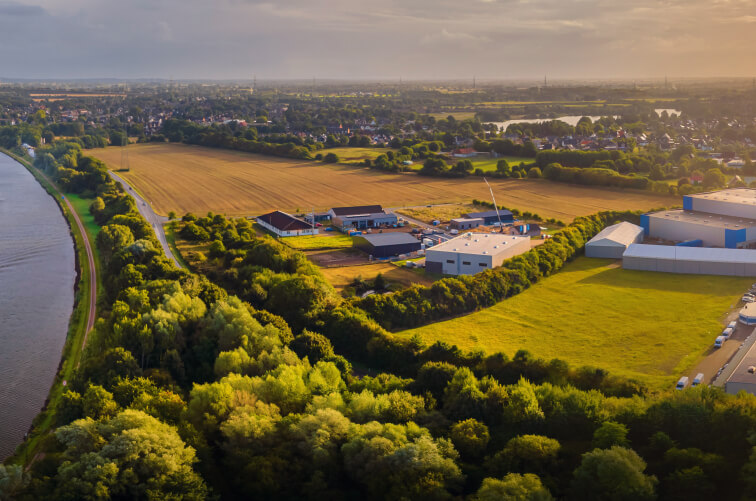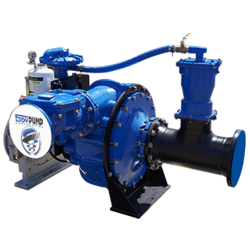Application of EDDY Pump in Renewable Oil Production



Application of Our Slurry Pumps in Renewable Oil Production

- Algae Harvesting: A submersible slurry pump can transport and pump algae slurry from cultivation ponds or photobioreactors to downstream processing units. Algae harvesting often involves separating algae cells from the growth medium, and slurry pumps can help facilitate this separation process.
- Biomass Handling: In processes where biomass feedstock (such as crop residues, wood chips, or organic waste) is used to produce renewable oils through methods like pyrolysis or hydrothermal liquefaction, the slurry transport pump can be used to transport and pump the biomass slurry to the conversion units.
- Biofuel Production: The heavy-duty slurry pump can be utilized in biofuel production processes where biomass is converted into liquid fuels, such as bioethanol or biodiesel. The industrial slurry pump can handle the slurries or pulps generated during pretreatment, fermentation, and enzymatic hydrolysis.
- Anaerobic Digestion: In anaerobic digestion processes that produce biogas from organic waste, the submersible slurry pump transports the waste slurry to digesters and other treatment units. The biogas produced can then be further processed to obtain biofuels.
- Lignocellulosic Biomass Processing: An industrial slurry pump can process lignocellulosic biomass, often used to produce biofuels and bioproducts. The heavy-duty slurry pump can help move the biomass slurries through pretreatment, enzymatic hydrolysis, and fermentation.
- Hydrothermal Processing: A submersible slurry pump can be used in hydrothermal liquefaction, converting wet biomass into bio-crude oil under high temperatures and pressure. Slurry pumps are needed to handle the biomass-water mixture and pump it into the hydrothermal reactor.
- Bioproduct Extraction: In processes aiming to extract valuable compounds from renewable feedstocks, such as oils from microalgae or other biomass, a slurry transport pump can assist in conveying the slurry to separation and extraction units.
- Wastewater Treatment in Biorefineries: The submersible slurry pump can be utilized in wastewater treatment systems within biorefineries, where they can handle sludges and slurries generated during different stages of the production process.
It’s important to note that the choice of industrial slurry pump type and design will depend on the specific characteristics of the feedstock, the process requirements, and the nature of the slurry being handled. Factors such as viscosity, particle size distribution, and abrasive nature of the slurry will influence the selection of the appropriate pump for each application in renewable oil production.
CALL FOR SALES OR SUPPORT
If you need help with Pump Selection, Sales or Engineering Support
Call 619-345-5446

Application of EDDY Pump’s Hydraulic Dredging in Renewable Oil Production

- Algae Cultivation and Harvesting: Hydraulic dredging can create and maintain algae cultivation ponds or raceways. A slurry pump dredge helps prevent sediment buildup and maintains the proper depth and conditions for algae growth. Additionally, a hydraulic dredger can assist in harvesting algae by pumping the algae slurry from the ponds for downstream processing.
- Algae Separation: After algae have been cultivated, a slurry pump dredge can aid in the separation of algae from the growth medium. Dredge pump systems can pump the algae slurry into separation units where the algae can be concentrated, and the growth medium can be recycled.
- Nutrient Management: Hydraulic dredging equipment can be used to remove excess nutrients, sediments, and organic matter from algae cultivation ponds, helping to maintain the water quality and prevent eutrophication. This is crucial for sustaining healthy algae growth.
- Water Circulation and Mixing: Dredge pump systems can be employed to maintain proper water circulation and mixing in algae cultivation ponds. This helps ensure uniform nutrient distribution, temperature control, and exposure to light, which are essential for optimal algae growth.
- Bioremediation: A slurry pump dredge can be used in bioremediation projects to remove pollutants and contaminants from water bodies, improving the overall health of the aquatic ecosystem and creating a more favorable environment for renewable oil production.
- Waste Removal: In processes where waste biomass or byproducts are generated, a hydraulic dredger can assist in removing and transporting these materials for further processing or disposal. This can help prevent accumulation and maintain the cleanliness of production facilities.
- Sludge Management: In wastewater treatment systems with renewable oil production, hydraulic dredging equipment can remove sludge and sediment buildup from treatment ponds, ensuring efficient treatment processes and preventing clogging.
- Land Reclamation and Restoration: Hydraulic dredging can restore or reclaim land by removing sediments, restoring water flow, and establishing suitable conditions for aquatic biomass growth. This can be particularly relevant in projects involving wetlands or marine habitats.




